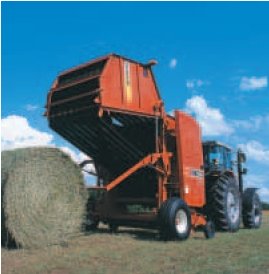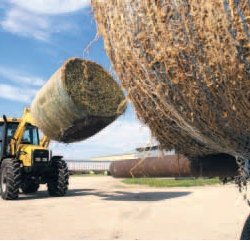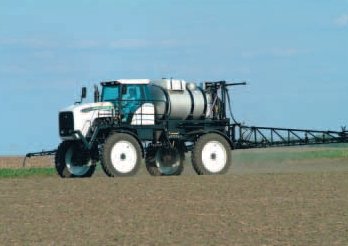Increase Yield with Organic Pasture Fertilizer
If you’re looking for a natural way to increase your hay yields and save money on your input costs then be sure to review the organic pasture fertilizer information below. Scroll down and you will see documented improvements in hay yield and drought resistance on farms and ranches across the country.
These are actual case studies showing the results of using all natural liquid organic pasture fertilizer in hay and pasture applications.
After reading about the successful farms and ranches below, go to the bottom of the page and request a free information package by mail to learn how you can increase yields and save money on your farm with all natural liquid hay and pasture fertilizer.
Here are just a couple:
Robert Benson, West Milford, West Virginia
Year: 1995
Applications:
- 5 gallons each of All Natural Liquid Organic Fertilizer 4-3-3 and Liquid Lime on 60 acres applied after each cutting or grazing period with low volume sprayer (4 gallons of spray per acre through 100 mesh nozzles with recirculation loop at each nozzle)
Results:
- 247 one thousand pound bales in 1995 compared to the 4 year average (1991-94) of 168 bales (a 47% increase in yield)
Observations:
- Fertilizer and sprayer cost $1,200 compared to $6,000 for the chemical fertilizer alone.
- Pastures were ready to be grazed again after 30 days instead of 90 days.
- Cattle used only 12 Magnesium blocks instead of 50 in previous years.

Jim Kranda, Warrenton, VA
Year: 1998
Applications:
- 1 gallon/acre each of All Natural Liquid Organic Fertilizer 4-3-3 and Liquid Lime in spring and again after each cutting (3 gallons total)
Results:
- 1st cutting: yield increase of 1,200 lbs./acre, 6 extra 2,000 lb. bales on 10 acres
- 2nd cutting: lost due to drought
- 3rd cutting. 15-16” tall
Observations:
- Excellent results using All Natural Liquid Organic Fertilizer 4-3-3 even after severe drought the crop recovered and a high quality 3rd cutting was harvested.

How To Apply Pasture Fertilizer
Mixed grass-legume production as it relates to permanent cultures on acid clay soils in the eastern U.S. and Pacific Northwest has special fertility requirements. These soils tend to contain high to excessive amounts of magnesium (Mg) and low to deficient amounts of calcium (Ca). The percentages of Mg and Ca must be adjusted to increase soil aeration allowing higher levels of biological activity to increase and sustain high productivity levels (the biology follows the chemistry).
In general, one ton of gypsum and one ton of high Ca lime applied per acre during field renovation increase aeration and improve drainage on clay soils for several years. After gypsum is tilled into the soil, irrigate or allow several inches of rain to fall to leach the Mg from the soil before applying lime. Some farmers are finding out that the soil chemistry stays in balance with very little change over longer periods (10 years or more) when all natural organic fertilizers are used in conjunction with the balancing of soil chemistry.

Foliar applications:
1.) Mix 1-3 gals. 4-3-3 Natural Fertilizer, 1-2 gals. Natural Liquid Bonemeal, and 1-2 qts. 0-0-8 Natural Kelp and Sulfate of Potash with 50-75 gals. of water. Apply as a fine mist with enough solution to thoroughly cover leaves. Apply first application in spring when plants are 4-6” in height. 2.) Repeat application when crop begins to regrow (4-6” height) after each cutting or grazing (on rotationally grazed pastures). 3.) Apply 2-3 applications per year.
Rates vary according to soil fertility, cropping history, and other inputs that are applied. Lower dilution rates are more effective than higher dilution rates. Two or three lighter applications may be more effective than one or two heavier applications. If other constraints allow only one trip over the field, then do not exceed a 3% dilution rate (3 gals. Natural Fertilizer to 100 gals. of water.
The addition of a biodegradable surfactant increases uptake by promoting adhesion to the leaf surface. Apply all natural pasture fertilizer in early morning or late evening. Do not apply before or after rainfall or irrigation. On standard field sprayers use turbo flood jet or flood jet nozzles when applying all natural liquid organic pasture fertilizer to reduce clogging and increase atomization.
To reduce susceptibility to attack of insects and disease causing organisms, apply 1-2 gals. of 4-3-3 or 1-2 qts. of 0-0-8/acre when signs of infestation begin to become apparent. When all natural liquid pasture fertilizer is added to the spray tank it reduces the pesticide needed to obtain effective control by 1/3 o 1/2. Some growers are finding that natural fertilizer applications alone eliminate the need for pesticide applications when they are applied at the same times as pesticides.
Preplant soil applications:
Mix 3-6 gals. 4-3-3 Natural Fertilizer with 20-30 gals. of water. Apply solution after seedbed preparation. Drag lightly after application.
How Do I Get It?
For more information on All Natural Organic Pasture Fertilizer (including bulk pricing), fill out the form below.